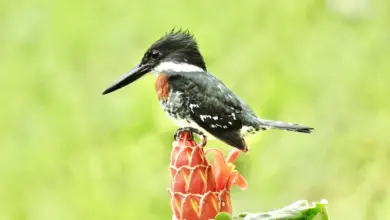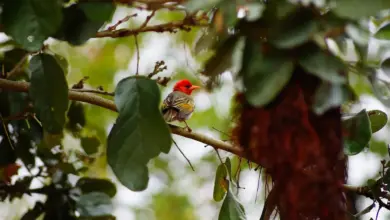Pied Flycatchers aka European Pied Flycatchers
The Pied Flycatchers, Ficedula hypoleuca, is a small passerine bird in the Old World flycatcher family, one of the four species of Western Palearctic black-and-white flycatchers.
Distribution / Range
It breeds in most of Europe and western Asia. It is migratory, wintering mainly in western Africa.
It is therefore a much earlier spring migrant than the more aerial Spotted Flycatcher, and its loud rhythmic, and melodious song is characteristic of oak woods in spring.
Description
The Pied Flycatchers is a 12-13.5 cm long bird.
The breeding male is mainly black above and white below, with a large white wing patch, white tail sides, and a small forehead patch.
The Iberian race iberiae (known as Iberian Pied Flycatcher) has a larger forehead patch and a pale rump.
Non-breeding males, females, and juveniles have the black replaced by a pale brown and may be very difficult to distinguish from other Ficedula flycatchers.
The bill is black and has a broad but pointed shape typical of aerial insectivores.
The very similar Atlas Flycatcher (Ficedula speculigera), of the mountains of northwest Africa was formerly classed as a subspecies of Pied.
Diet / Feeding
As well as taking insects in flight, this species hunts caterpillars amongst the oak foliage and will take berries.
Breeding / Nesting
They are birds of deciduous woodlands, parks, and gardens, with a preference for oak trees. They build an open nest in a tree hole, and will readily adapt to an open-fronted nest box. 4-10 eggs are laid.



